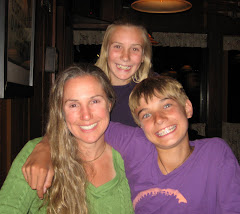As a lawyer with some familiarity with the area of Critical Legal Studies (CLS), I came to this class with some expectation that Critical Literacy would entail deconstructing texts to examine issues such as bias, power, agency, and reader positioning, essentially approaching literature in the way that CLS approaches jucicial opinions. Over the course of the semester, I have broadened my thinking about Critical Literacy to take into account its focus on reading for social action -- the notion that examining issues of bias without taking remedial action may be tantamount to enabling or perpetuating the bias. CLS has a similar focus on using law as a tool for social change, but I hadn't really thought about how that might play out in Critical Literacy when I began this class. While I see enormous value in empowering children to take social action, I have to say that I also believe that there is great benefit in the awareness-raising and attitude-modification that can come from "mere" examination of and deconstruction of texts; I would not subscribe to the more extreme position that all discovery of bias and inequity must lead to a social action project in order to be meaningful.
As a writer, and in a vein that has more to do with flavor than contours, I have to say that I've really appreciated Vivian's continual effort to remind us that literature always provides an opportunity to "create space" for various discussions, and that teachers need not, and, in fact, probably should not, come to such discussions with predetermined talking points; our role should rather be that of facilitators, helping students to find the answers -- and questions -- that resonate for them, both collectively and as individuals. Thus, books like Into the Forest, with ambiguous, or perhaps not fully realized, messages can nonetheless be wonderful vehicles for discussion in the critical literacy spirit.
Through the course, I've also developed a greater appreciation for the importance of what I'll call "literary enfranchisement" in the classroom -- the notion that it is not only valuable but critical for students to be see their own experiences and identities reflected positively in both the stories and the authorship of the books that surround them and inform their learning.
Vivian is a lovely person and a delightful teacher :) This class was definitely the highlight of the MAT program for me. Thank you!
Tuesday, November 25, 2008
Sunday, November 23, 2008
Media Research
I have to confess that I watch so little TV that the one example I came across of a children's literature theme in the TV media was almost twenty years old -- from a recorded episode of "The Wonder Years" that aired in 1989. The commercial, for Huggies diapers, featured Sleeping Beauty, a two-year old who had been asleep in her royal crib for about a hundred years and was finally woken by the arrival of Prince Charming, a two-year old boy bearing the gift of Huggies leak-proof diapers. Apparently, in bringing Sleeping Beauty the diapers, Prince Charming fulfilled the girl's ideal of happiness.
I was a bit skeptical about how a girl with a leaking diaper would have been able to sleep through the night, much less for a hundred years, but the tongue-in-cheek message of the ad was clear: life begins (again) when a girl meets the prince who can rescue her from adversity, and the prince in such cases is well-advised to consult commercial sources in the pursuit of material, and romantic, success.
It would be interesting to compare the commercials of that era with modern commercials, but I just don't watch any prime time TV, and CNN and MSNBC don't seem to run commercials with kiddie lit themes. Looking at the reports of my peers, however, it seems, that princess themes are alive and well, but also counterbalanced in some instances by edgier messages that deconstruct or at least pull at the edges of the traditional themes.
I was a bit skeptical about how a girl with a leaking diaper would have been able to sleep through the night, much less for a hundred years, but the tongue-in-cheek message of the ad was clear: life begins (again) when a girl meets the prince who can rescue her from adversity, and the prince in such cases is well-advised to consult commercial sources in the pursuit of material, and romantic, success.
It would be interesting to compare the commercials of that era with modern commercials, but I just don't watch any prime time TV, and CNN and MSNBC don't seem to run commercials with kiddie lit themes. Looking at the reports of my peers, however, it seems, that princess themes are alive and well, but also counterbalanced in some instances by edgier messages that deconstruct or at least pull at the edges of the traditional themes.
Subscribe to:
Posts (Atom)
